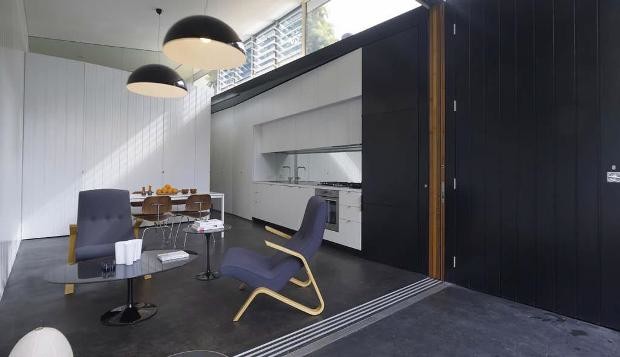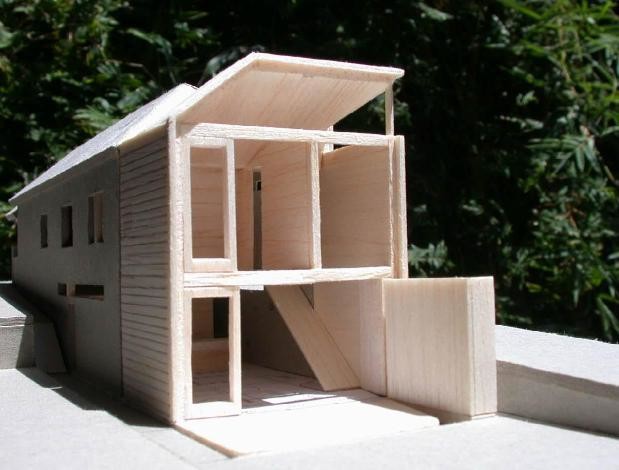Sydney-based architect Christopher Polly is something of a renovation expert, with a series of small, stylish and sustainable homes to his credit.
Christopher Polly creates homes perfectly suited to the pages of any glossy coffee-table book. At the same time, they’re homes that tread lightly on the earth, combining the best of contemporary design with sustainable building principles. Polly set up his Sydney-based practice in 2005 and since then virtually all his work has involved extensive home renovations.
His design philosophy is to identify the outstanding elements of an existing home and design his renovation to complement them.
“Say a particular house has a fairly strong form, I’ll identify the elements that I think have integrity or significance and I’ll quite directly respond to those,” Polly said.
“That may mean extruding a form without necessarily making it complex. I’m not interested in adding anything that’s not appropriate.”
He is also a strong advocate of designing homes in as light a way as possible. “It’s important to minimise our inputs, because building generally is a very intensive process,” he said.
For Polly, this involves adapting a home to its environmental conditions.
“I try to provide as much access as possible to the prevailing climatic conditions, such as northern light, ventilation, views – all those responses that can enrich the whole.”
Polly tries to re-use as many existing materials as he can, salvaging and repurposing those that are useable, and he’s as diligent as he can be when specifying new materials.
“I try to look for local suppliers and materials that have had low environmental impact in terms of their production and travel to the site.”
Haines House, Newtown, Sydney
From the front, this semi-detached house in Sydney’s inner west may not look all that different to its previous incarnation. Inside, however, the home has been radically revamped, with an imaginative addition at the property rear.
The first big signal of change comes just inside the front door, in the form of a huge, vibrant orange sliding door.
It opens into a bedroom that used to be the living room, beyond which are another bedroom and a study.
The former kitchen is now a living area, beyond which is a bathroom, and beyond that an open-plan living, kitchen and dining area that open out to a deck and garden. The biggest challenge was bringing natural light and warmth to the rear of the home, which faces south.

Here, Polly raised the entire roof and inserted a layer of highlight windows along the eastern side of the house. These wrap around to the rear to draw in as much light as possible.
“They’re all high-performance grey toned glazing, which cuts a lot of eastern glare and some sections are frosted for privacy.”
The floor of the lower part of the home’s new section is concrete, and its thermal mass absorbs heat on warm days. It also incorporates in-floor heating, a cost effective way of warming the home in winter, and, unusually, extends outdoors to become the garden deck. Equally unusual is its colour: Polly had it mixed with CCS black oxide to so that it matches other black elements in the décor.
The floor in the upper part of the steel and timber framed new section is recycled blackbutt tongue and groove strips, finished with a Feast Watson custom charcoalgrey stain. The inside and outside walls, meanwhile, are clad with treated pineshiplap boards.
Cosgriff House, Annandale, Sydney
While the brief for this home was similar to that of the Haines house, the solution with Cosgriff was even more radical: a whole new floor was added under the back of the house. And while the front part required only cosmetic updates, the rear of the house, which is still under construction, is where the real magic lies.
The home’s three bedrooms and a study will be on the ground floor, with a new staircase leading down to a massive living, dining and kitchen area, and a laundry and bathroom dug in at the back. Polly created space for this new level by digging downwards to create a 2.6 metre ceiling height, while also lowering the rear garden. As in the Haines house, the floor here is concrete with in-floor heating, and it too extends outside to become the deck. Again, Polly has clad the lightweight steel and timber frame in a panelled effect, but this time used a sheet material to give a similar grooved look inside and out.

“We used Scyon Axon cladding, a fibre-cement product rather than shiplap board,” he says. “The sheet solution enabled a more efficient execution for the builder due to a fold in the new interior wall and exacting alignments that were required to meet the existing finishes.”
Polly designed the roof of the new section to bring in light and warmth while making sure the neighbour’s access to light and views weren’t too impeded. He mirrored the roof angles of the original part of the house, folding the roof down n one side where it would otherwise affect the neighbours, yet folding it up at the rear and side to draw light from the east and north.
“At the same time, it provides views of the sky and a massive jacaranda in the backyard,” Polly said.
Images by Brett Boardman and Christopher Polly
This article was originally published on Light Home website, which is sponsored by the lightweight materials range Scyon™ . The site is set up as an informative hub on green building and sustainable architecture for designers, builders and consumers.

